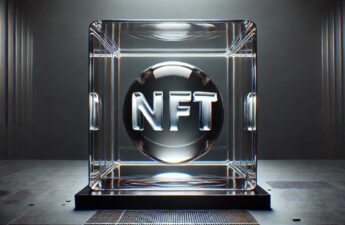Exchanging Bitcoin for Runes via a command-line interface? For some, setting up a Bitcoin node—which validates transactions and keeps a record of network activity—that is capable of doing just that evokes a sense of confusion or dread.
For others, it’s a technical endeavor that could come in handy soon when Runes, a protocol for Bitcoin-based fungible tokens (such as meme coins), unleashes a sluice of new assets on the network.
“A lot of people are super intimidated to run a Bitcoin node,” Trevor Owens, general partner at the Bitcoin Frontier Fund and CEO of Ninjalerts, told Decrypt. “The reality is that running a Bitcoin node is as hard as using BitTorrent to download seasons of ‘How I Met Your Mother.’”
After launching the NFT-like Ordinals protocol last year, Bitcoin developer Casey Rodarmor proposed Runes as a framework for creating fungible tokens on Bitcoin last September.
However, the launch of Runes is expected to coincide with Bitcoin’s halving later this week—sometime close to 4/20—as the rate at which new Bitcoin is created gets slashed in half during the pre-programmed event.
Some NFT marketplaces, such as the multi-chain Magic Eden, already support Bitcoin-based tokens like BRC-20s and are prepared to support Runes. Yet for fear of bugs or lag across various marketplaces, Owens said that Ninjalerts has walked dozens of its community members through setting up a Bitcoin node of their own. In essence, it’s a fallback for potentially panicky times.
“They’re going to hundreds of thousands of people who are frantically refreshing websites,” Owens said of NFT marketplaces. “And there’s no promise that’s all going to go off flawlessly.”
Currently, five paid teachers and one volunteer have hunkered down in Ninjalerts’ Discord server, guiding people through node setups daily, Owens said. Hosting sessions in English and Chinese, about 75 members of Ninjalerts’ Discord server have participated so far, he added.
The movement to set up personal Bitcoin nodes in preparation of the Runes launch represents an alignment of values between crypto’s so-called degens and the need to preserve Bitcoin’s security, Tomas Skandera, a developer and self-described freedom maximalist, told Decrypt. The more nodes on Bitcoin’s network, the more resilient it becomes, in theory.
go get a bitcoin node set up
— Frank (@frankdegods) April 7, 2024
“More nodes means winning, sir,” Skandera said. “Freedom go up.”
Security implications aside, Franklin Templeton Digital Assets said in a report published Monday that the launch of Runes could help Bitcoin “close the gap” between other networks like Solana and Ethereum—when it comes to becoming a hotbed for meme coins.
‘Become a developer’
Over the past 90 days, the number of nodes monitoring Bitcoin’s network has increased 15% to around 18,600, according to data from Bitnodes. Still, Bitcoin’s helping hands aren’t limited to Ninjalerts or the Ordinals community.
For the intrepid Ordinals fans who wish not to sift through technical documentation on their own, a few guides on YouTube also exist. One explainer, for example, delves into the impact that Unspent Transaction Outputs (or UTXOs) have on one’s ability to mint Runes, and another walks viewers through creating Runes using a computer’s terminal window.
As the YouTuber pazNGMI explains, Runes are unique compared to other types of Bitcoin-based meme coins, such as BRC-20s, because the Runes protocol utilizes UTXOs to generate new transactions. UTXOs are effectively a digital pocket where excess Bitcoin from a transaction is stored, and crypto users looking to nab Runes can submit one mint per UTXO in-wallet.
“How much should I expect to spend per transaction? The answer is: I have no idea,” pazNGMI said, estimating that Runes transactions could cost users $90 to $130 worth of Bitcoin.
Beyond helping people set up nodes, Owens said that Ninjalerts plans to teach its community members next about maximal extractable value or MEV bots.
Though similar tools have stifled BRC-20s in the past, they can also “snipe” transactions to a trader’s advantage. By paying a higher fee, bots have a higher chance that their transactions are processed faster. That could move them up the list to mint a hot new Runes token before it’s all snatched up, for example.
“We wanted to just teach them how to write these simple types of scripts,” Owens said. “I don’t think everybody in the world can become a developer, but I think the majority of people can.”
Edited by Andrew Hayward
Stay on top of crypto news, get daily updates in your inbox.
Source: https://decrypt.co/226688/bitcoin-traders-brace-runes-launch-setting-up-nodes-why


